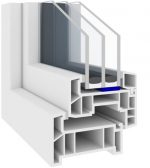Korea’s largest research laboratory dazzles with sustainable glass architecture
In the west end of the metropolis of Seoul, the globally active LG Group is re-grouping its research and development departments. The new LG Sciencepark currently employs a workforce of some 22,000 and is developing solutions for a new age of digitalization and Industry 4.0. To date, 20 buildings have been built on the campus under the management of the internationally active HOK architectural firm. A key part of the sustainably designed and LEED-certified research centers are the high-quality glass facades incorporating insulating units manufactured with the Ködispace 4SG warm-edge system from H.B. Fuller | KÖMMERLING.
The LG Group with its subsidiaries, such as LG Electronics or LG Hausys, is recognized as one of the world’s largest corporations. Founded in 1947, the company employs over 200,000 people worldwide with its headquarters in the South Korean capital Seoul. Until 2018, the subsidiaries’ research and development departments were spread throughout the city. With the new LG Sciencepark, the Group is concentrating its research laboratories in one location. Over a total area of 170,000 square meters, a building complex the size of a medium-sized German city is being built in the west of Seoul for up to 25,000 employees – making it Korea’s largest science center.
Innovation for a better life
At the LG Sciencepark, research is conducted on new technologies such as artificial intelligence, robotics, autonomous driving and on the latest innovations for efficient energy management, renewable energies or biotechnologies. To enable new, revolutionary ideas to emerge, LG wanted an inspiring environment for its researchers. The campus is intended to promote teamwork, the joy of discovery and the ability to react flexibly to changing space requirements. In close collaboration with LG, the HOK architectural office designed the Sciencepark under the LG slogan “Innovation for a better life”. By 2024, 26 buildings are scheduled to be built on the campus, with 20 currently completed. Each subsidiary will have its own individually designed building, and each building boasts nine floors, its own entrance and a spacious foyer. The units are connected to each other by landscaped pedestrian promenades that invite you to linger and exchange ideas. Several single-story bridge buildings also connect the individual units. These provide shade on the ground floors, and artistically designed gardens have been created on their accessible roofs.

The glass facades consist of Low-E insulating glass from LG Hausys, which is produced with the Ködispace 4SG warm-edge system.

The LG Sciencepark is Korea’s largest research laboratory.

Up to 25,000 LG Group employees will be researching innovations for the future here.
Certified sustainability
The American HOK architectural firm (Hellmuth, Obata + Kassabaum) with more than 1,600 employees worldwide, together with its local partner firm Gansam Architects, created an exceptionally sustainable architectural design for the science campus. Compared to the building units previously spread across the city, energy consumption has been reduced by 38 percent. The LG Sciencepark was certified according to the U.S. Green Building Council’s LEED sustainability standard. The research buildings received the Silver award, the Integrated Support Center (ICS) even achieved the highest level with a Platinum certification. The ICS is located at the heart of the campus and serves as a venue for events, exhibitions and seminars, and includes daycare facilities for children, as well as sports and recreation areas. The campus has also been named “Energy Champion” by the Korea Energy Agency. In addition to photovoltaic systems and groundwater heat pumps, the highly thermally insulated facades with their expansive glass elements play a major role in the energy concept.
High-tech glass panes for the Sciencepark
Some 98,000 square meters of glass have been installed on the campus to date – the equivalent of roughly 14 soccer fields. LG was able to use the proven Low-E glass from its LG Hausys subsidiary for the double-glazed insulation glass used. LG Hausys has been producing low-emissivity glass for about ten years. As a wafer-thin metal layer applied to one surface the low emissivity coating reduces the emissivity of the glazing and serves as a thermal insulation and solar control layer.
Durable edge sealing
LG Hausys is regarded as an innovation driver in the construction industry and is the only insulating glass manufacturer in South Korea to date to use the high-quality Ködispace 4SG warm-edge system from H.B. Fuller | KÖMMERLING. The thermoplastic spacer for insulating glass offers maximum energy efficiency and service life with a uniquely distinctive appearance, while fully meeting LG’s high manufacturing quality standards. After all, glass facades such as those in the LG Sciencepark need to be able to permanently cope with the ever-changing thermal loads in Seoul, where winters are cold and summers are hot. To ensure that the insulating glass panes can process these temperature differences and maintain their energy efficiency, a permanently functioning and tight edge seal is an absolute prerequisite. Insulating glass with the Ködispace 4SG elastic spacer has proven to be extremely robust, resilient and durable. The warm-edge solution not only fulfils the requirements for a permanently tight edge seal in a uniquely effective way but is also extremely interesting from a design perspective. Because the reactive thermoplastic spacer system is applied fully automatically, insulating glass with Ködispace 4SG can be produced with absolute precision and optical perfection. As a result, these panes develop a unique aesthetic: no unattractive offset of the spacer profiles and, above all, no disturbing light reflections as with classic spacer systems – the black Ködispace 4SG makes the space between the panes practically invisible.
The insulating glass from LG Hausys with the warm-edge system from H.B. Fuller | KÖMMERLING makes a significant contribution to the high-quality and sustainable architecture that embodies the spirit of the Sciencepark. Moreover, the generous glass facades provide the buildings with plenty of natural daylight while generating light-flooded laboratories and offices for the Science Campus staff. “All design decisions were centered around the wellbeing of the researchers – with a focus on productivity and the exchange between researchers. This is where LG will focus on designing the future for mankind,” explained Ju-Hwan Shin, Managing Director LG Sciencepark Business Unit/Construction Drive Division, at the opening of the LG Sciencepark.

The campus currently consists of 20 buildings, all of which are LEED-certified.
For further information and to forward a specimen copy,
please contact:
Kömmerling Chemische Fabrik GmbH
Alexandra Rohr
Zweibrücker Str. 200
D-66954 Pirmasens
E-Mail: marketing@koe-chemie.de
www.koe-chemie.de
About the Kömmerling Chemische Fabrik GmbH
Since 2017, the Kömmerling Chemische Fabrik GmbH has been part of the US H.B. Fuller | KÖMMERLING Adhesives Group. The world’s largest supplier of adhesives and sealants for insulating glass applications therefore has significant expertise in this area, which is constantly being advanced at H.B. Fuller | KÖMMERLING at its German site in Pirmasens through research and new fields of application. With its three business units – Engineering Adhesives, Construction Adhesives and Hygiene, Health and Consumable Adhesives – H.B. Fuller | KÖMMERLING covers a wide range of high-quality adhesive and sealant applications that are used in a variety of industries such as electronics, hygiene, medicine, transportation, construction and renewable energies. The international group generates sales of close to 3 billion US dollars and has 6,500 employees serving customers in more than 125 countries.
The Next Generation of Spacers
The Ködispace 4SG thermoplastic warm edge system from H.B. Fuller | KÖMMERLING has been awarded the ASC Innovation Award by the North American Adhesive and Sealant Council (ASC). With the next-generation spacer, the world’s largest supplier of adhesives and sealants for insulating glass applications has been impressing the US construction industry since 2016.
In early November 2020, the Adhesive and Sealant Council based in Alexandria, Virginia (USA), presented its coveted Innovation Award for the fourth time. The ASC Innovation Award is aimed at promoting innovation in the adhesives and sealants industry, as well as in the scientific community. An independent jury evaluates the solutions submitted for their innovative strength and the impact of the technology on the state of the art. H.B. Fuller | KÖMMERLING impressed the jurors with its Ködispace 4SG thermoplastic spacer and was honoured with second place.
The Adhesive and Sealant Council (ASC) is a North American association representing the adhesives and sealants industry. It is an alliance of over 100 adhesive and sealant manufacturers, suppliers, distributors and industry consultants. The ASC offers its members a platform for knowledge exchange, promotes collaboration for innovative product development and represents the industry as a common interest group.
Ködispace 4SG wins over the jury
Ködispace 4SG is a reactive thermoplastic spacer for use with insulating glass. As a next-generation warm edge system, Ködispace 4SG combines spacer, desiccant and primary sealant in one product. Since Ködispace 4SG chemically bonds to both the glass surface and a silicone secondary sealant, the entire edge seal “melts” into a highly durable unit. This results in permanently tight and extremely durable insulating sealed units. Another significant advantage is the flexibility of Ködispace 4SG: It absorbs deformations without creating significant stresses in the edge seal. This makes the warm edge system especially suitable for the most demanding of mechanical applications, such as the cold bending of insulating glass units, where it offers a clear advantage over conventional, rigid spacers. Ködispace 4SG is ideal for the production of insulating glass for standard windows, as well as more complex structural glazing applications.
“We are very pleased that the Adhesive and Sealant Council has acknowledged Ködispace 4SG’s potential and rewarded the value of the solution,” said Dr. Christian Scherer, Head of Business Development Glass at H.B. Fuller | KÖMMERLING. “With our spacer system, we not only ensure energy-efficient, durable insulating glass, we also offer planners and building owners virtually unlimited design freedom, thereby enabling innovative glass designs. To date, more than 15 million square metres of Ködispace 4SG insulating glass units have been installed worldwide, achieving long-term energy efficiency in thousands of residential and commercial buildings – from small single-family homes to huge skyscrapers with stunning architecture – and therefore providing a valuable contribution to the fight against climate change.”
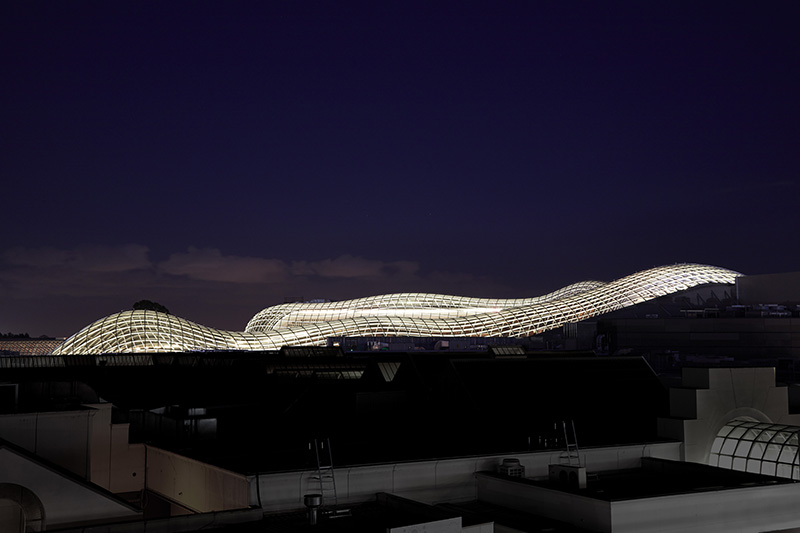
In the flowing glass roof of the Chadstone Mall in Melbourne, Australia, the flexible warm edge system with Ködispace 4SG ensures permanent gas tightness for the cold-bent insulating glass panes.

The ASC Innovation Award trophy for the Ködispace 4SG reactive thermoplastic spacer system.
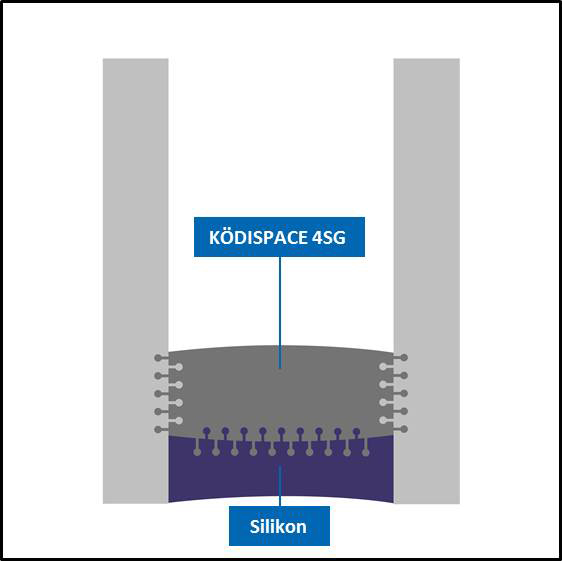
Due to its special composition, Ködispace 4SG forms a chemical bond with the glass as well as with the secondary silicone sealant. The insulating glass therefore becomes a firmly bonded yet flexible unit.
Kommerling warm edge system, Ködispace 4SG, has been used in a recent extension to the Gösta Serlachius Museum in Finland. The Gosta Pavilion is the latest addition to the home of the industrialist and art collector, Gosta Serlachius. Designed by Spanish architect, MX-SI, the extension’s structure consists of 100 parallel laminated timber frames, interspersed by high windows.
The pavilion, which took 18 months to construct, is 135m long and 17m high at its maximum height. It is joined to the Serlachius private family residence, a brick house with a copper roof, by a glass corridor. The addition of this new building has reportedly increased the museum space by 500m², to a total of 1.500m², and it houses both a permanent exhibition of the Gost Serlachius art collection alongside varying exhibitions by both Finnish and international artists.
The warm edge system
The silicone-sealed glass panels in the project were manufactured by Finnish company, Seloy, with specialist sealant made by Kommerling. The bonded elements conceal a special warm-edge system, which thanks to flexible edging, is said to be equal to the wild temperature extremes of the local climate. At the heart of the sealing process is a separator called Ködispace 4SG.
According to Kommerling, the warm-edge system menas that insulation panes are ‘extraordinarily’ robust, resilient and durable and also ideally suited for the physical requirements of structural glazing.
Glass with aesthetic properties
Ködispace 4SG is said to considerably enhance the aesthetic properties of glass elements; there are no ‘ugly’ separator displacements in the three-ply insulation panes or disruptive light reflections that can be caused by metal parts. The black sealant ensures that the space between panes is almost invisible and sight lines from within the museum are unhindered, giving the impression of a ‘fluid transition’ between the building and its surroundings.
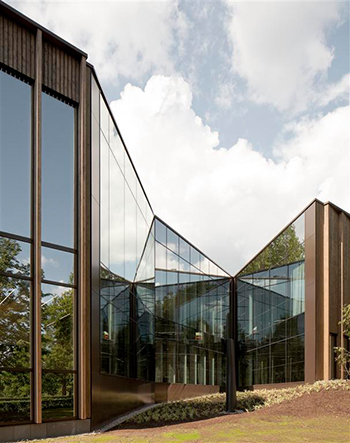
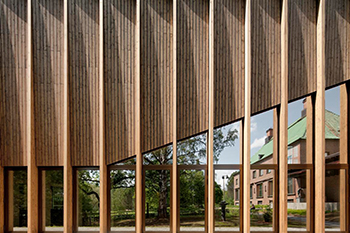
Q&A with Dr. Knut Göke, product manager at KÖMMERLING Chemische Fabrik GmbH
GGP: What sort of problems can arise with glass facades?
KG: The extreme temperatures occurring in the faces cause the insulation glass to expand and pull together again, thus exposing the edging to enormous stresses. If the sealant is not able to accommodate this movement and instead compensates for them, the seal becomes leaky, hence elasticity of the sealant is a significant precondition for permanently, well-sealed insulation glass. If the seal cannot be maintained then there is a risk of loss of gas and thermal insulation. Material incompatibility among the adhesives and sealants used and in interactions between construction materials deployed can also cause additional problem, which in the worst case scenario can lead to expensive and hazardous structural damage.
GGP: Why is Ködispace 4SG so well suited to structural glazing?
KG: Black polyisobutylene is extruded from the barrel direct on to the disc to create a well-sealed, homogeneous separator. In the process it replaces primary sealant, metallic separator and desiccant. Its special formulation allows it to form a chemical bond with the glass and secondary sealant silicone. The overall edging remains permanently elastic and gas-tight over the long term. Kommerling also offers suitable secondary sealants that are fully compatible and thus provide a reliable and safe warm-edge system.
GGP: How has this sealant benefited the Gosta pavilion?
KG: Serious cold puts additional strain on glass. The warm edges of Ködispace 4SG are great at surviving the severe sub zero temperatures of the Finnish winter without any problems. It is clear that this climate places great demands on thermal glass insulation and its durability. Without the appearance of an unsightly separator, the warm edge approach allows the interesting architectural design to deliver maximum impact.
Source: Glass & Glazing Products, issue October 2016
The last crime figures show that the police registered exactly 167,136 burglaries in Germany last year. Which means that another flat is ransacked every three minutes on average. Doors and windows are frequently exploited vulnerabilities for break-ins. But the protection from burglars can be markedly improved by gluing.
The annual number of burglaries has been on the increase again for a while, most recently by nearly 10 percent in 2015. The perpetrators very often break into flats and houses by prying open a window. A simple screwdriver will suffice to do this with standard windows. Leverage is applied to design-related vulnerabilities: the connections between the glazing and casement, between the casement and window frame, and between the window frame and wall.
Tested resistance classes
A remedy is provided by anti-burglary windows with demonstrably tested resistance classes. Which is also why the police is recommending components rated RC2 or higher. But a window will only prevent intrusion if the safety chain formed by the bonding of the glass, rebate area and connection to the wall is completely closed and the entire system meets the requirements of the desired resistance class.
Glued all around
What this means for the glass bonding is that glass strips need to be screwed or glued in place to make the grade. A far better solution for this is to glue the insulating glass into the casement, however, because the circumferential bond will fuse them into a single entity.
Only a small number of glazing blocks will now be required for load transfer, if any at all. This eliminates a leverage point for prying the window open at the glass joint. The gluing additionally improves the statics of the entire casement, which is rendered torsion-resistant and virtually impossible to twist. The consequence: A burglary tool applied to only a single point of the window will be unable to gain enough leverage for bending the casement. The gluing hence not only strengthens the glass joint, but indirectly also the connection between the casement and window frame.
The recommended RC2 resistance class is furthermore reached with particular ease if the insulating glass is glued to the casement. This offers tangible advantages for window makers and fitters: The blocking is reduced or even done away with entirely, with no separate fastening of glass strips required. All the window needs now is the right RC2 fitting, and appropriate installation at the building site. In addition, this can also be done using profiles with no additional steel reinforcements.
Polyurethane glue meets the requirements
To be recommended as an optimal antiburglary solution is the gluing position at the base of the rebate with a polyurethane adhesive called Ködiglaze P from Kömmerling. This can not only be used for RC-gluing to plastic profiles, but also all the other commonly used frame materials such as wood, wood/aluminium and aluminium, for example. The glue is available in a one-component version in 600 ml sausages or also in a two-component version for application with mixing and dispensing systems.
Glued to the rebate base
The bonding with the rebate base achieves the best statics: As opposed to glass edge bonding, the casement will not require additional overlaps for reinforcement. The PUR adhesive furthermore achieves a high mechanical stability and is hard to cut. It can even be used to provide RC2-compliant fixed glazing directly at the building site. The one-component adhesive is easy to handle, enabling the insulating glass to be glued into the ready-assembled frame on site without difficulties.
To ensure a permanently secure bond, the manufacturer’s adhesives are compatible with most insulating glass sealants available on the market. This also means that they are attuned to the commonly used polysulphide- or polyurethane-based insulating glass sealants in their chemical as well as mechanical properties. These materials are furthermore compatible with the commercially available PVB films used to increase the glazing’s anti-burglary effect from resistance class RC2.


